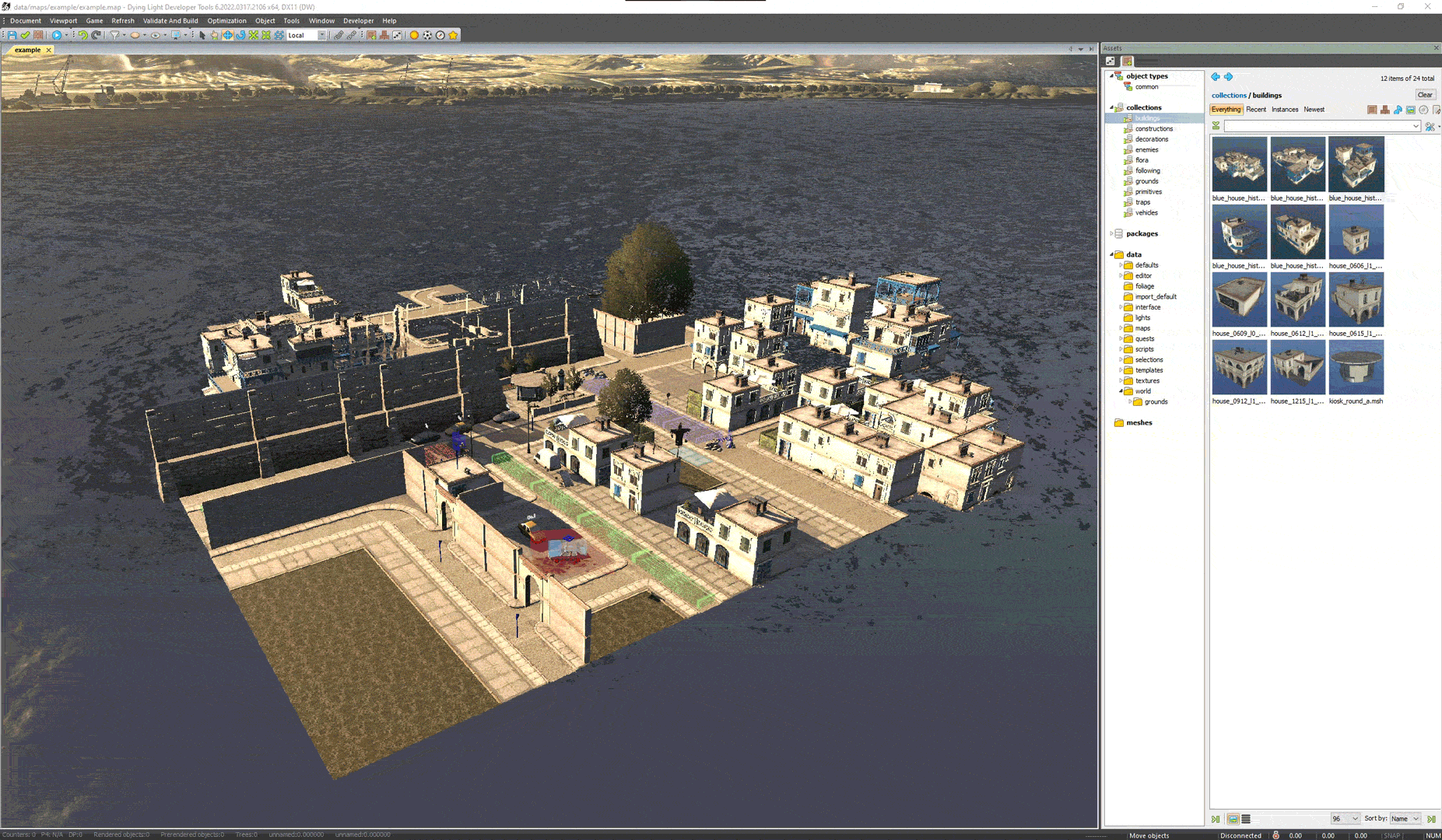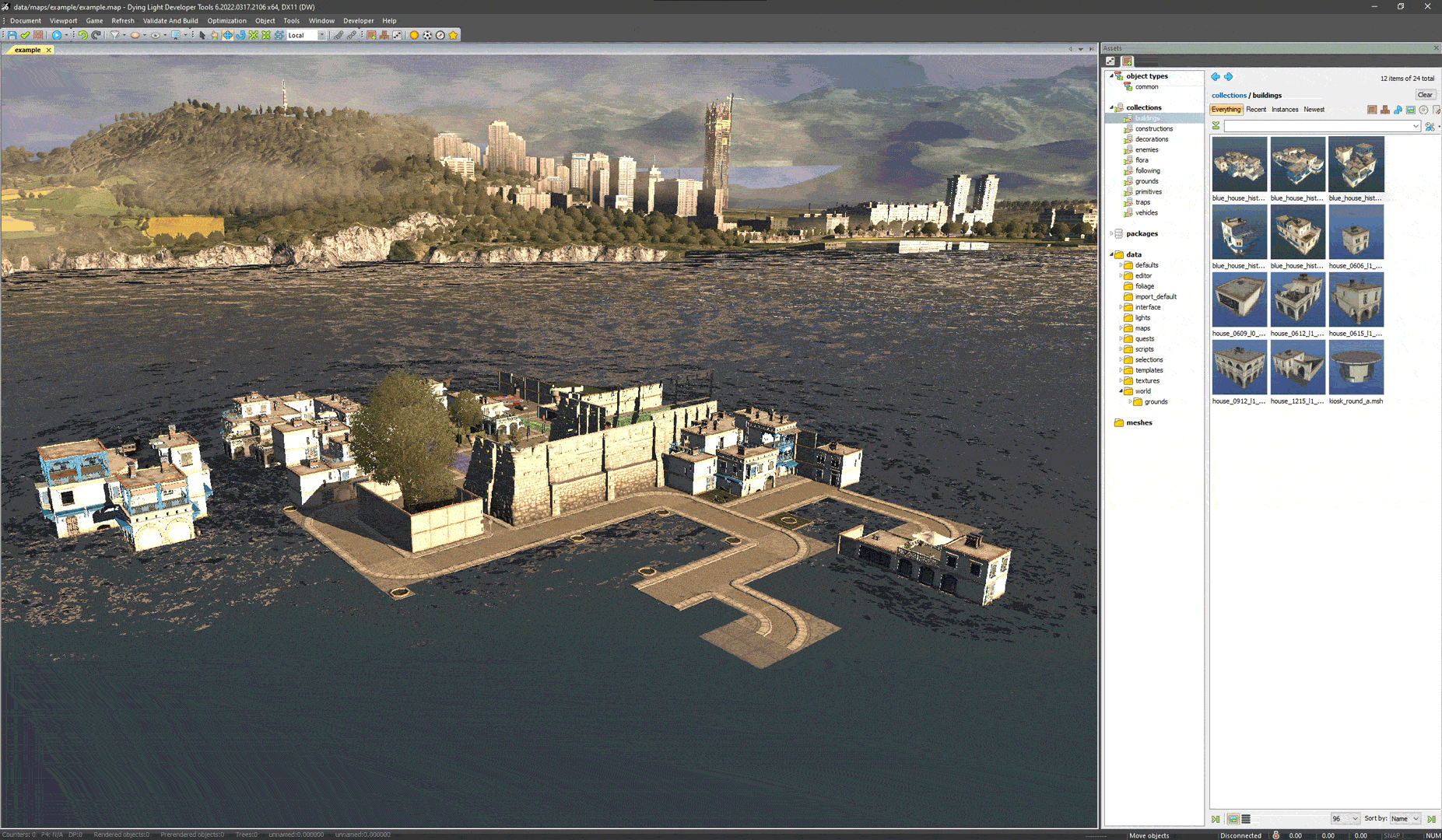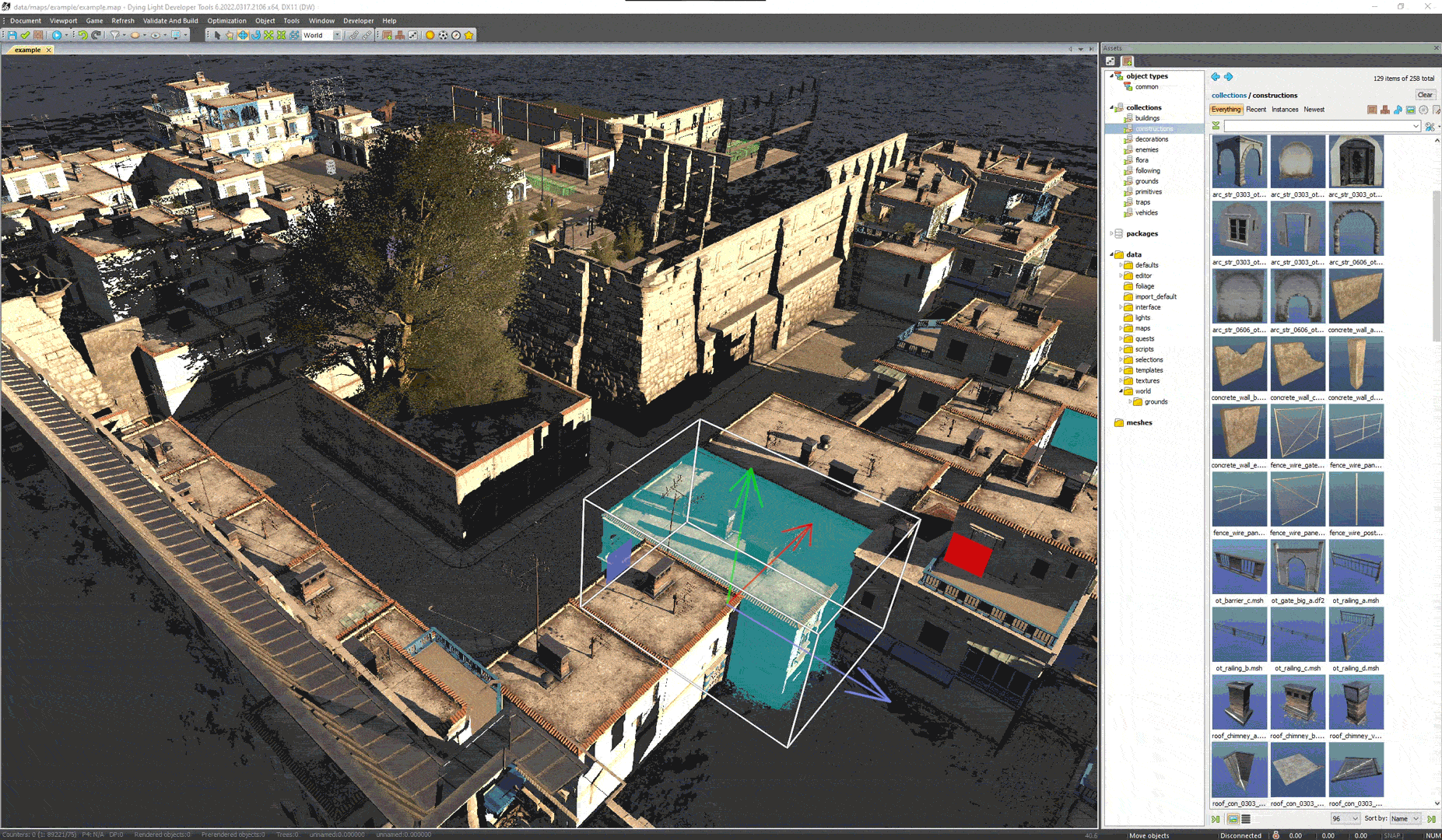Downtown
Downtown is a fan mod for dying light, showcasing a isolated section of the harran city crawling with zombies and rare loot on a quest to retrieve vital scientific data.
Project length = 1 week
Behind The Scenes
Downtown is a standalone level set within the Chroma engine 6, using the official dev tools within steam. The level follows the design conventions set in the original game, with a balanced focus on exploration, combat and parkour using cities landscapes and in game objects.
The idea came about with seeing a blog post for the 10th anniversary of the first installment, with a indieDB page showcasing the chroma engine available for download. As practice, the first step was to experiment with the engine and know the techincal boundaries that the fanmod will have to follow. The initial impressions of the engine were good as it similar to Unreal in terms of workflow whilst being fast to compile and run for iteration testing.
Using the beginning of a example map, simple roads and buildings were added using prefabs from the "collection" list. The LV design for this was also improvised instead of following the traditional planning seen in other projects. This is because the aim of the level is to improve proprietary knowledge rather then improve core level design knowledge. This proved to not be a issue later on in the project
as the level was more quickly iterated on with better design routes and balancing.
The beginning area was kept as a larger public space with benches and stores, with side routes being more claustrophobic with higher enemy density with extrinsic rewards for player determination. later areas would include more vehicle traps and spike placements to launch enemies into as well as a smaller section of the town with more optional areas to explore.
This first iteration was successful but had some visual artifacts such as Z fighting, improper tiling and SFX being played incorrectly due to the wrong class being used by mistake. These would be fixed by manual adjustment with all SFX being manually replaced with a focus on correct class usage to avoid sounds being played too early, as the there are no collision boxes for these effects for optimsation on 8th gen console. A level design changed made for the 2nd iteration was to also add a side route to bypass the main road directly into exploration areas to make the urban planning more believeable.
Final Renders




Technical Quirks
The Chroma engine is quite similar to unreal with the addition of a content drawer and shortcuts with ALT and CRTL that allows for quick duplication and tiling of props, however one quirk is that when selecting props, you have to select the prop BEFORE you drag it into the game world unlike other engines which allow for drag and drop which can throw some designers off. This kind of archaic content drawer system is similar to that of the HAMMER editor's.
The top bar is kept simple with good iconopgrahy and forgiving resizing elements to allow LV designers to change spacing of icons on a per user basis. Placing decals within the game world is more tedious then other props as it becomes incredibly difficult to select/edit within the editor unless directly selecting the asset from a hierarchy list. Placing these props is more intuitive and reliable then other engines but editing after the fact draws it back. Some objects when placed would become locked due to a hidden keyboard shortcut with no clear options to "unlock" them with deleting the prop and replacing it.
Some MDL files within the engine are missing thumbnails which requires constant placing/deleting to figure out which prop to use unlike other engines which keep these up to date to avoid wasting time on tasks that can be automated. Editor and in game performance performs very well, as there where no performance issues with the editor or compiling screens. Most assets are optimised out of the box including lighting which makes it a more accurate and robust engine then something compared to unreal.
Some assets such as SFX have a test function baked into the class that allows for the selected SFX to repeat with attribute changes being applied in real time similar to something like the new metasounds system in Unreal. The biggest issue in the engine is the outdated and high skill floor scripting language. Whilst Metro's SDK uses a basic VS system alongside Unreal's Blueprint VS and HAMMER's in/out system, Chroma uses something more advanced. The quest needs to be setup and formatted within a special text file (.SRC) that is then controlled with a PXSL script. However at the time of making the level, the engine had been updated to a point where the old scripting standards became outdated and therefore the aim of scripting a custom quest for Downtown became unrealistic for a LV Designer.
Overall the engine was suprising with how quick, intuitive and relatively pain free it was to use within a 20 hour time mark. More levels could be put together in the future to make a spawling town level without many hiccups. The built in sharing feature to the team workshop that still works nearly 8 years later is also a testament to how well the engine has stood the test of time in a fast moving industry.
Example of quest script language




Gameplay Footage
Technical Breakdown
Skills Learnt
-
Refined exploration of new engines outside of Unreal
-
Learnt a new engine alongside creating a custom map within one week
-
Improving designs by using a more iterative approach within the engine to fix early foundational issues which i can then expand on with level theory
-
Tackled issues within my skillset such as inproper scale and Z-fighting as well as improving optimsation and frame timings
Skills Used
-
Chrome Engine 6
- Steam workshop
- Iterative development


